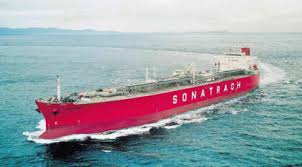The $25 billion goal of the African Development Bank (AfDB) is “well on track,” according to AfDB President Akinwumi Adesina, whose organization supports programs in over 30 African nations that have contributed to the production of almost $12 billion worth of food.
“In my opinion, we shouldn’t be discussing food security in Africa in more than five years. It has no justification, he told reporters. “We have the funding and the technology to do it on a large scale.”
The invasion of Ukraine by Russia in February 2022, one of the world’s leading exporters of grains, caused tremors in the grain markets, endangering the food security of some of the world’s most fragile countries, including many in Africa.
The development of the El Nino weather pattern and the failure of a deal to move grain from Ukraine through the Black Sea have worsened the world’s food security problems.
Adesina brought up the expansion of special agro-industrial processing zones, which in Nigeria alone might increase from covering eight states to 35 after a recent request, during his remarks on the sidelines of the UN General Assembly meetings in New York. These are rural areas where infrastructure development is being prioritized in order to attract food and agricultural businesses.
Twenty-seven more states in Nigeria asked us to support them in this specific way, according to Adesina.
According to the AfDB, 216 million children in Africa are affected by undernutrition and stunting, and nearly half of all child fatalities on the continent are caused by inadequate nutrition. The economic cost of poor nutrition is estimated to be 11% of Africa’s GDP.
MORE RESOURCES
Before governments gather in late November for international climate talks in Dubai, Adesina said he expected the International Monetary Fund board to push proposals to channel $100 billion in funding to vulnerable nations through multilateral development banks.
This is how we’ll figure out how to obtain more resources at scale, he claimed. Adesina noted the African Development Bank’s three- to four-times leverage capacity, saying that a $20 billion allocation channeled into us automatically becomes up to $80 billion for Africa.
Adesina did not provide any information regarding the status of a hybrid note for which investor calls began earlier this month and received what he described as a “very optimistic response.”
In contrast to the bank’s AAA rating, S&P Global gave the notes an AA-minus rating. It stated that it anticipates the issue to be between $250 million and $1 billion, “subject to market conditions.”
Pricing of the note, according to Adesina, will happen “very, very soon.”
Adesina stated that the bank must be recapitalized following the most recent round of lending in 2019 in order to reach its goal of being a $100 billion lender. At the end of 2022, it had a $27.5 billion lending portfolio.
“Our shareholders share our ambition. We must now make sure that we simply figure things out and determine where everyone has a comfort zone.




















